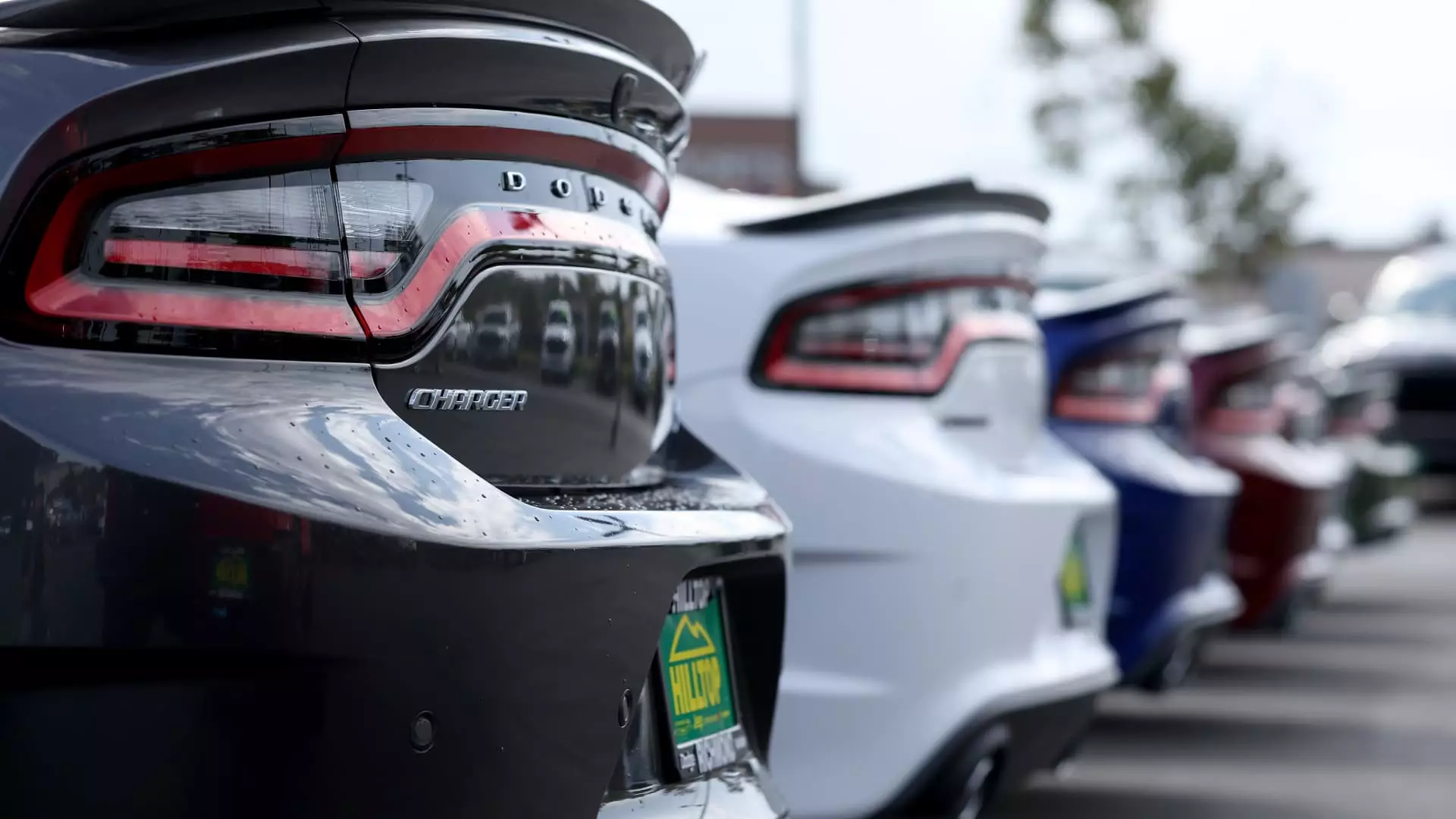On a tumultuous Monday morning, shares of European automotive giants plummeted as Stellantis and Aston Martin issued profit warnings that shook investor confidence. These alerts signal not only internal struggles but also highlight the broader obstacles currently plaguing the automotive industry, particularly amidst shifting dynamics in the global market, especially in China—the world’s largest automotive landscape.
Stellantis, the French-Italian group known for its diverse array of brands, including Chrysler, Jeep, and Maserati, announced it would be revising its 2024 annual guidance due to an unfavorable shift in “global industry dynamics.” The company indicated that it was confronting heightened competition from Chinese manufacturers, warning that sales were likely to underperform expectations across most regions in the latter half of the year. As a result, Stellantis now anticipates an adjusted operating income (AOI) margin of between 5.5% to 7.0%, considerably lower than earlier predictions of a double-digit margin.
This drastic shift in projections reflects not only Stellantis’ struggle to cope with rising industry supply but also the intensified competition from a burgeoning Chinese automotive sector. This situation has led to a grim reassessment of market conditions, casting a shadow over anticipated revenue and growth prospects in what was once regarded as a solid sector for investment.
Not far behind in strife, British luxury carmaker Aston Martin is also feeling the pinch. The brand, synonymous with high-performance and luxury—famed for its appearances in James Bond films—announced a reduction in both profit margins and production targets. The downsizing by approximately 1,000 units is largely attributed to disruptions in its supply chain and ongoing macroeconomic challenges in China, a market that poses both significant opportunities and formidable challenges for Western automakers.
With projections now indicating earnings before interest, taxes, depreciation, and amortization (EBITDA) for 2024 falling short of last year’s figures, Aston Martin’s outlook appears grim. Once promising expectations of achieving positive free cash flow in the latter half of this fiscal year have also been dashed, now forecasting gross margins below the significant 40% threshold. The company has taken steps to tackle supply chain issues but is evidently struggling to maintain the pace needed for competitive luxury car production.
This alarming downturn in Aston Martin’s performance is evident in their stock’s trajectory, which dropped nearly 23% early in the trading session, marking one of the most significant falls for the company in recent memory. Such drastic shifts in stock value not only reflect investor sentiment but also pose considerable risks for the company’s ongoing operational efforts and long-term viability.
The turmoil experienced by Stellantis and Aston Martin is not an isolated incident; it occurs against a broader backdrop of struggles within the European automotive landscape. Just days before these warnings surfaced, German automotive powerhouse Volkswagen disclosed similar concerns, trimming its annual outlook and citing a 5.6% operating return on sales for 2024, down from a previously estimated range of 6.5% to 7.0%. The company attributes this revision to sluggish performance across both its passenger and commercial vehicle segments, mirroring the broader challenges facing the industry.
European carmakers are grappling with fierce competition not only from each other but also from a rapidly advancing crop of Chinese manufacturers that are making significant inroads into the electric vehicle (EV) market. As the automotive industry continues to shift towards greener technologies, the pressure mounts on established European firms to adapt or risk falling behind. This ongoing transition to EVs, coupled with consumer hesitance, has exacerbated the situation, making it increasingly difficult for these companies to recapture pre-pandemic sales levels.
With the automotive sector in Europe facing uncertain economic conditions and intense competition, the immediate future appears challenging. Analysts, such as those from ING, caution that the road ahead is fraught with risks that threaten the fragile recovery of traditional automakers in a market that seems more unpredictable than ever.
The profit warnings from Stellantis and Aston Martin serve as a wake-up call not only for these specific companies but also for the broader European automotive industry, which must navigate through a labyrinth of challenges that include fierce competition, supply chain difficulties, and evolving market demands. As European carmakers attempt to recalibrate their strategies amidst these disruptions, it remains to be seen how effectively they can respond to these challenges while remaining competitive on the global stage.

Leave a Reply